ANKLE
Ultrasound allows immediate evaluation of periarticular soft tissues, both statically and dynamically. Following structures can be evaluated: joint effusions, soft periarticular tissue (muscles, tendons and ligaments) and bone abnormalities.
Position of the patient:
The patient is lying supine and the knee flexed 90°. To perform examination of the dorsal part (Achilles tendon) the patient is lying prone with the knee extended and with the ankle fully dorsally flexed.
1. Anterior view
A. Longitudinal plane
B. Transversal plane
2. Medial view
A. Longitudinal plane – deltoid ligament
B. Transversal plane
3. Lateral view
A. Longitudinal plane – ATFL
B. Transversal plane
4. Posterior view
A. Longitudinal plane
B. Transversal plane
5. Plantar view
A. Longitudinal plane
1. Anterior view
The probe is placed above the tibiotalar joint. Joint effusion can be present between tibia and talus. Muscles/tendons of extensor muscles and tibialis anterior can be evaluated.
Figure 1.
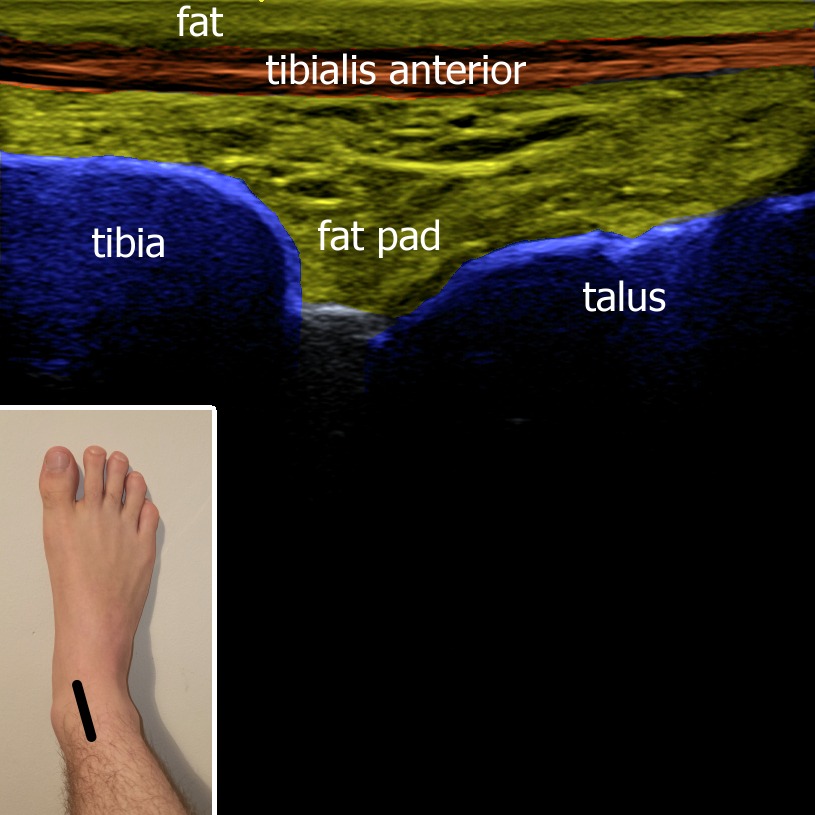

The three extensor tendons of the foot can be visualized in short axis. The tendons can be tracked from their origin to their insertion. Arteria dorsalis pedis can be also evaluated.
Figure 2. TA – musculus tibialis anterior, EHL – musculus extensor hallucis longus, EDL – musculus extensor digitorum longus, a – artery.

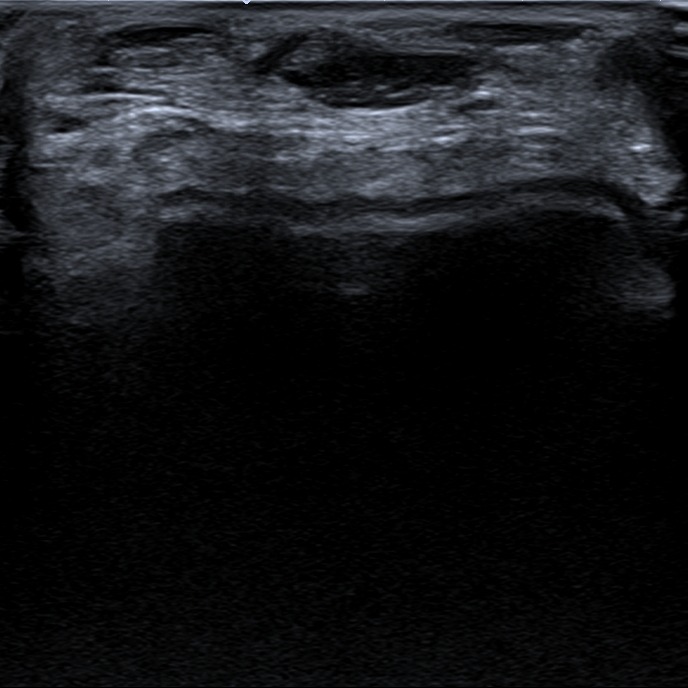
2. Medial view
Deltoid ligament and it’s parts can be visualized at the medial ankle.
Figure 3. MM – medial malleolus, DL – ligamentum tibiotalare anterius.
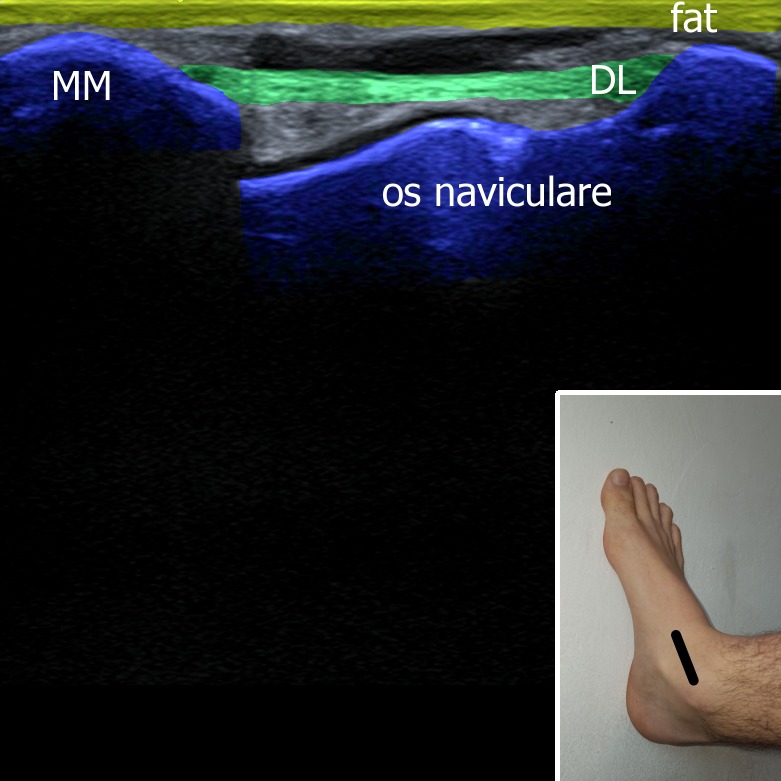
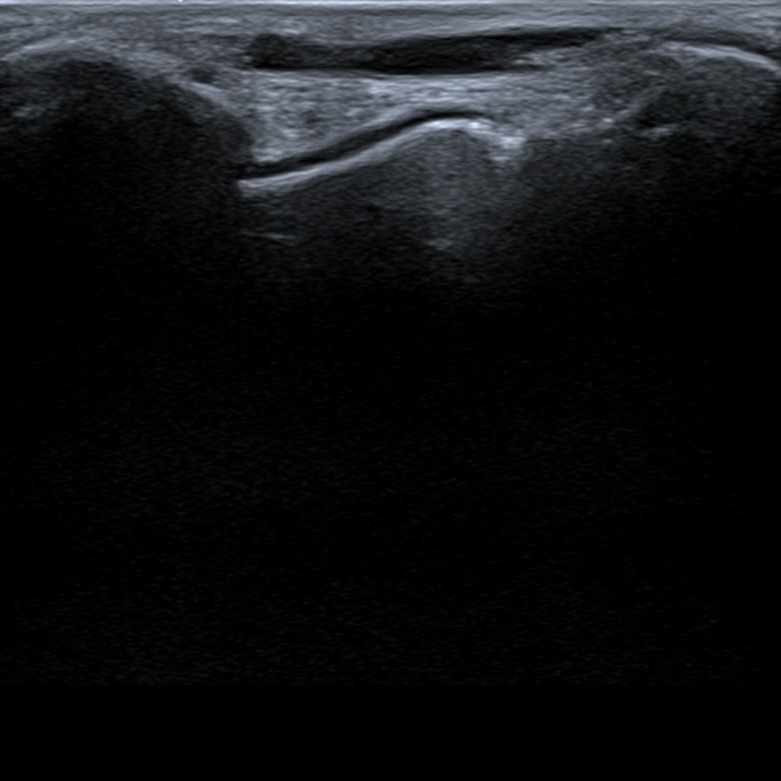
Behind the medial malleolus the flexor tendon of the foot (tibialis posterior, flexor digitorum longus, flexor hallucis longus) can be visualized. Another important structure that can be find in this area is tibial nerve and posterior tibial artery and veins.
Figure 4. FHL – musculus flexor hallucis longus, FDL – musculus flexor digitorum longus, TP – musculus tibialis posterior, N – tibial nerve, A – artery, V – vein.
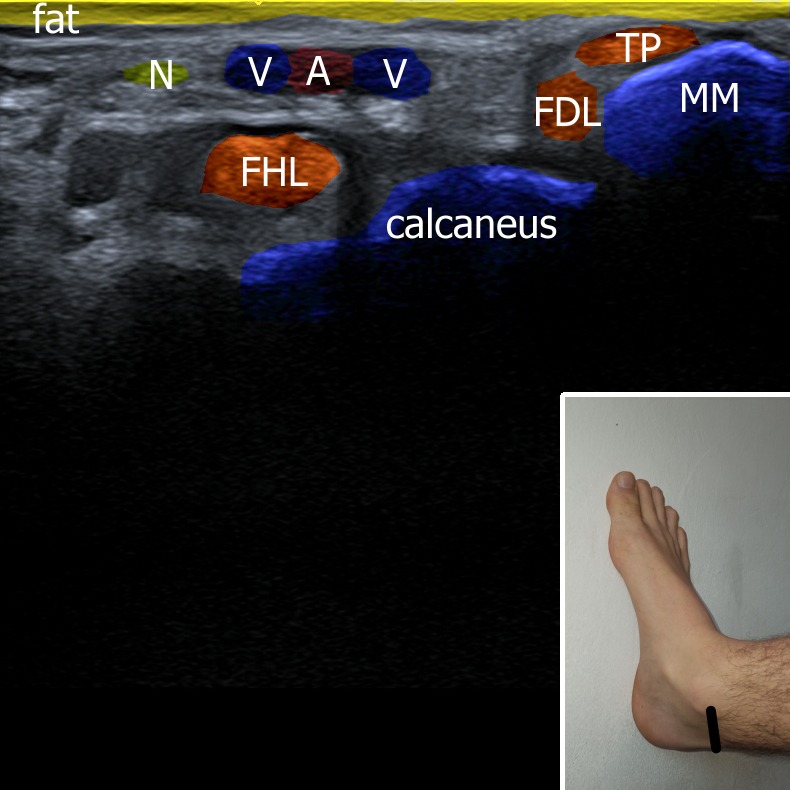
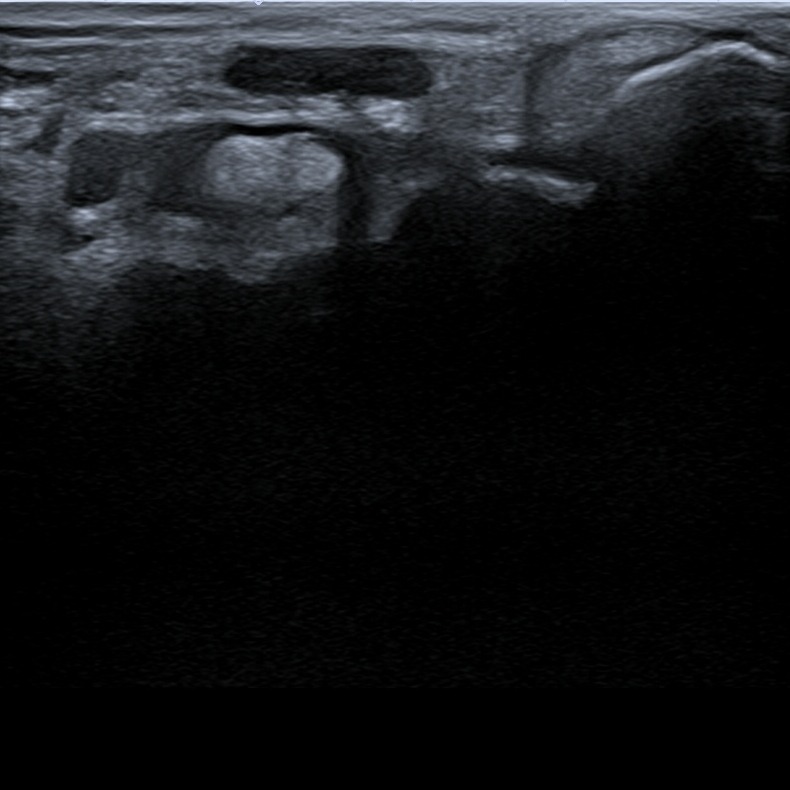
3. Lateral view
Placing the probe between lateral malleolus and the talus, anterior talofibular ligament can be find. For better visualization of the ligament inversion of the foot can be performed.
Figure 5. LM – lateral malleolus, ATFL – anterior talofibular ligment.
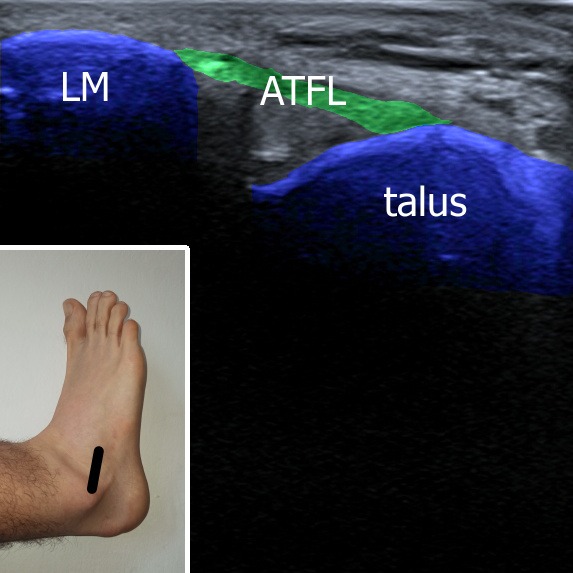

Behind the lateral malleolus tendons/muscles of the long and short fibularis muscle can be find.
Figure 6. FL – musculus fibularis longus, FB – musculus fibulris brevis.
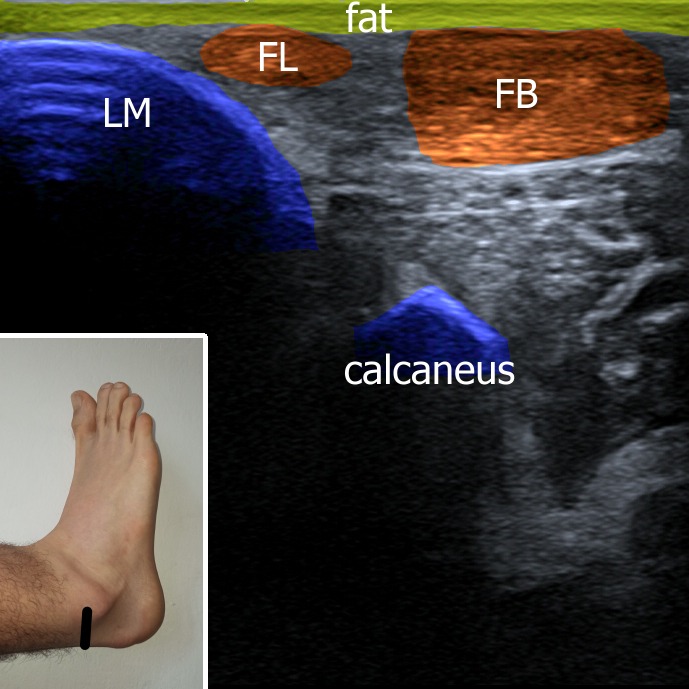
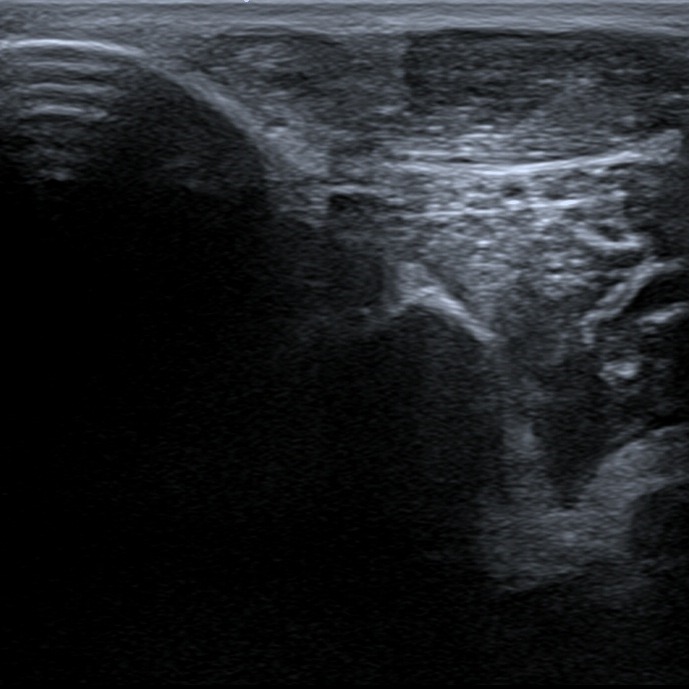
4. Posterior view
Insertion of the Achilles tendon onto the calcaneus can be visualized. Various pathologies (such as tendinosis, calcification, partial or complete rupture) of the Achilles tendon can be evaluated.
Figure 7.
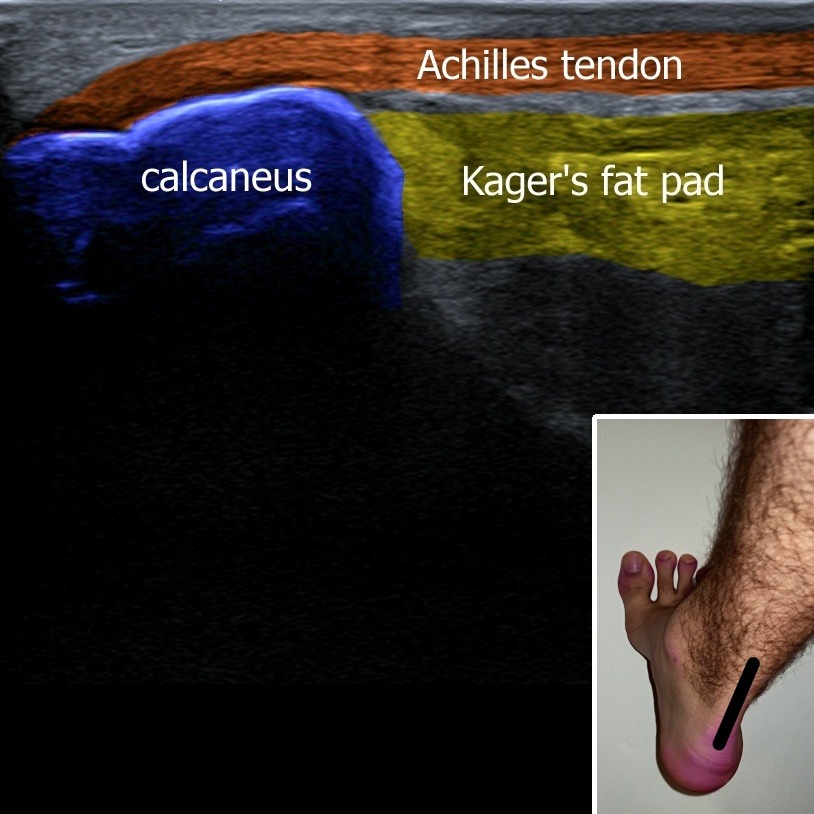
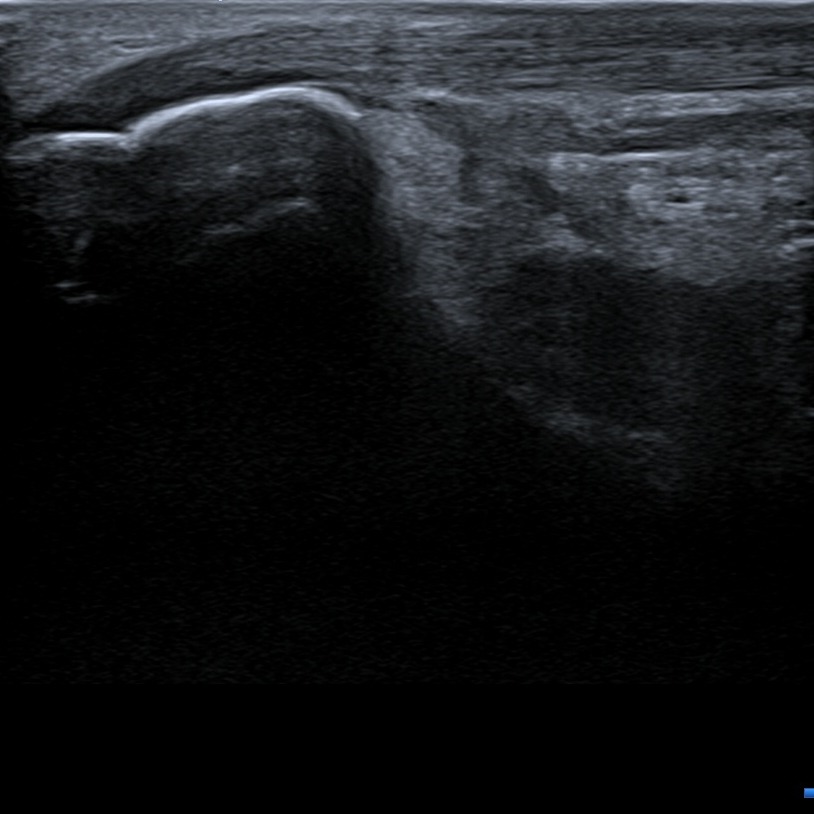
Achilles tendon can be also scanned in it’s short axis from myotendineous junction to the insertion onto calcaneus.
Figure 8. B – bone. A – Achilles tendon.
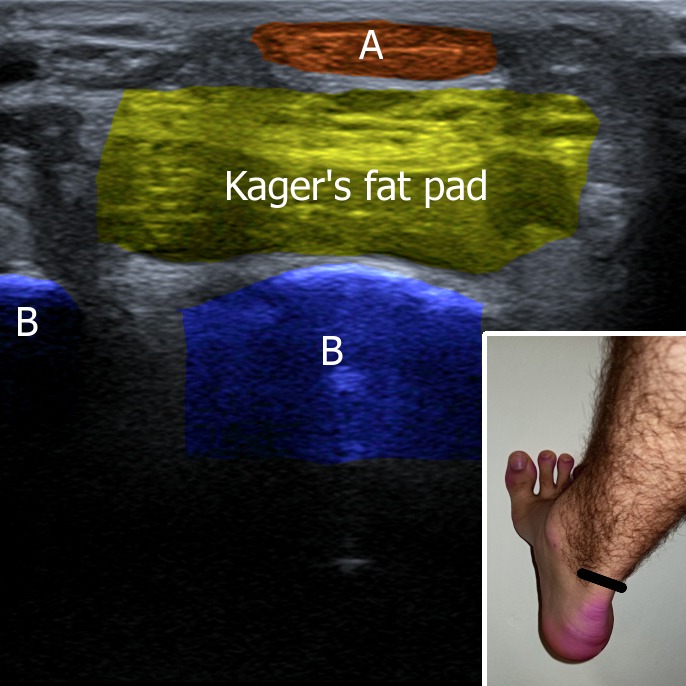
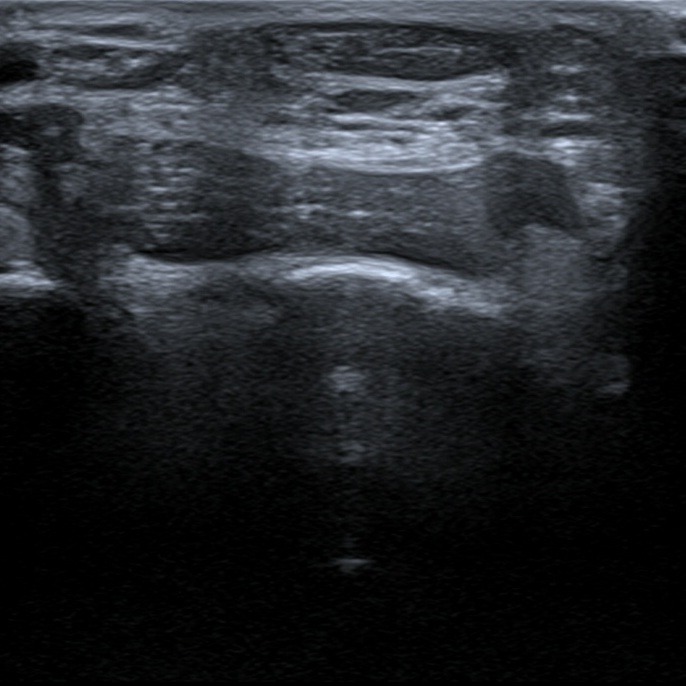
5. Plantar view
Placing the probe onto calcaneus pararel to long axis of the foot the plantar fascia can be visualized. Underneath the plantar fascia flexor digitorum brevis can be evaluated.
Figure 7. PF – plantar fascia, FDB – flexor digitorum brevis.
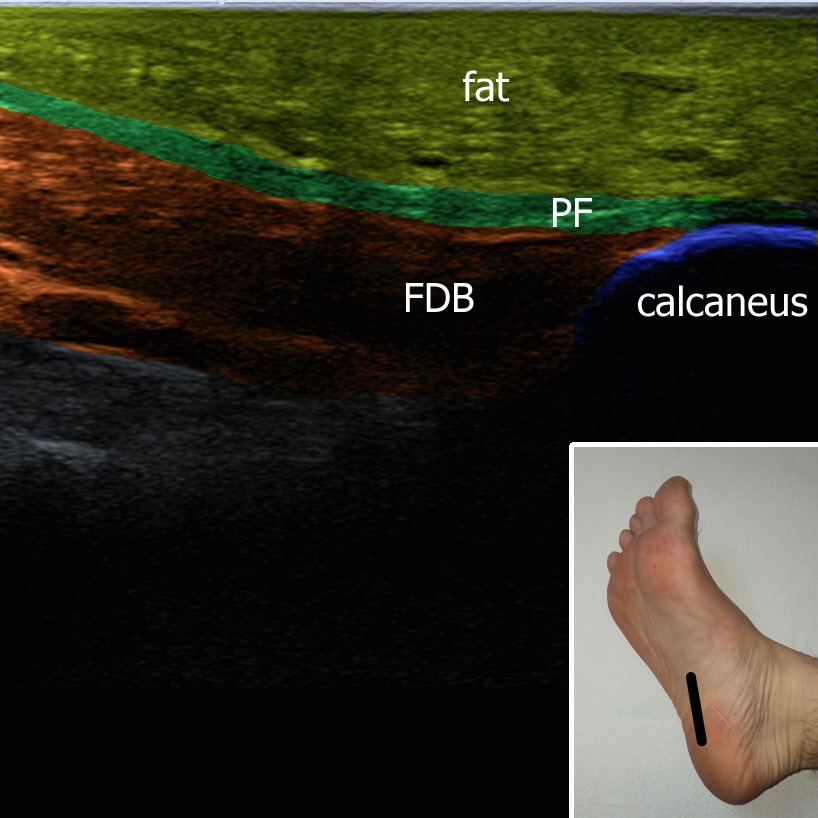
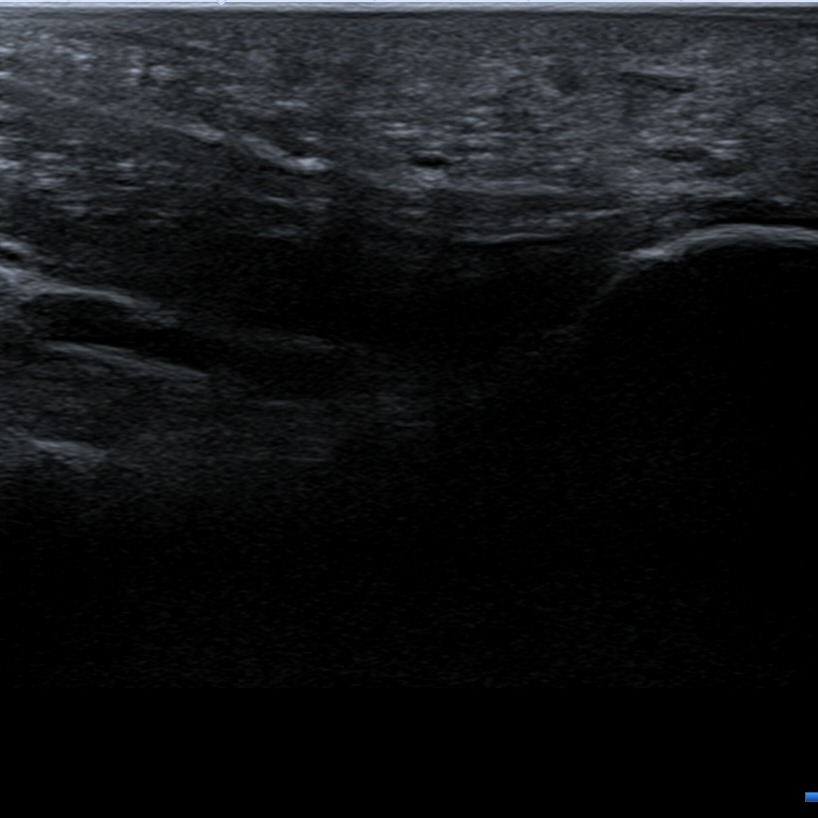
1. Anterior view
The probe is placed above the tibiotalar joint. Joint effusion can be present between tibia and talus. Muscles/tendons of extensor muscles and tibialis anterior can be evaluated.
Figure 1.


The three extensor tendons of the foot can be visualized in short axis. The tendons can be tracked from their origin to their insertion. Arteria dorsalis pedis can be also evaluated.
Figure 2. TA – musculus tibialis anterior, EHL – musculus extensor hallucis longus, EDL – musculus extensor digitorum longus, a – artery.


2. Medial view
Deltoid ligament and it’s parts can be visualized at the medial ankle.
Figure 3. MM – medial malleolus, DL – ligamentum tibiotalare anterius.


Behind the medial malleolus the flexor tendon of the foot (tibialis posterior, flexor digitorum longus, flexor hallucis longus) can be visualized. Another important structure that can be find in this area is tibial nerve and posterior tibial artery and veins.
Figure 4. FHL – musculus flexor hallucis longus, FDL – musculus flexor digitorum longus, TP – musculus tibialis posterior, N – tibial nerve, A – artery, V – vein.


3. Lateral view
Placing the probe between lateral malleolus and the talus, anterior talofibular ligament can be find. For better visualization of the ligament inversion of the foot can be performed.
Figure 5. LM – lateral malleolus, ATFL – anterior talofibular ligment.


Behind the lateral malleolus tendons/muscles of the long and short fibularis muscle can be find.
Figure 6. FL – musculus fibularis longus, FB – musculus fibulris brevis.


4. Posterior view
Insertion of the Achilles tendon onto the calcaneus can be visualized. Various pathologies (such as tendinosis, calcification, partial or complete rupture) of the Achilles tendon can be evaluated.
Figure 7.


Achilles tendon can be also scanned in it’s short axis from myotendineous junction to the insertion onto calcaneus.
Figure 8. B – bone. A – Achilles tendon.


5. Plantar view
Placing the probe onto calcaneus pararel to long axis of the foot the plantar fascia can be visualized. Underneath the plantar fascia flexor digitorum brevis can be evaluated.
Figure 7. PF – plantar fascia, FDB – flexor digitorum brevis.


1. Özçakar L, Kara M, Chang KV, Bayram Çarli A, Hung CY, Tok F, Wu CH, Akkaya N, Hsiao MY, Tekin L, Wang TG, Ulaşlı AM, Chen WS, De Muynck M. EURO-MUSCULUS/USPRM. Basic Scanning Protocols for Ankle and foot. Eur J Phys Rehabil Med. 2015 Oct;51(5):647-53. Epub 2015 Sep 8. PMID: 26351106.









